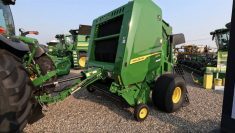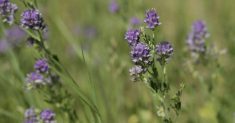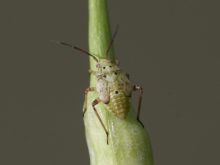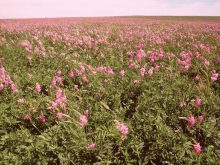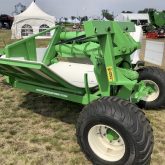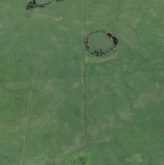Glacier FarmMedia – Cattle producers are urged to get greenfeed and straw tested for potentially deadly nitrates this year.
“Basically, we know there’s going to be nitrates in some of the feed. Especially cereal,” said Jo-Lene Gardiner, who works with the Border Agriculture Stewardship Association and is a cattle farmer in the Clearwater area. “It’s just been that type of year.
“We always recommend guys test for nitrates in greenfeed and often we encourage them to do it with straw as well,” she said.
Read Also
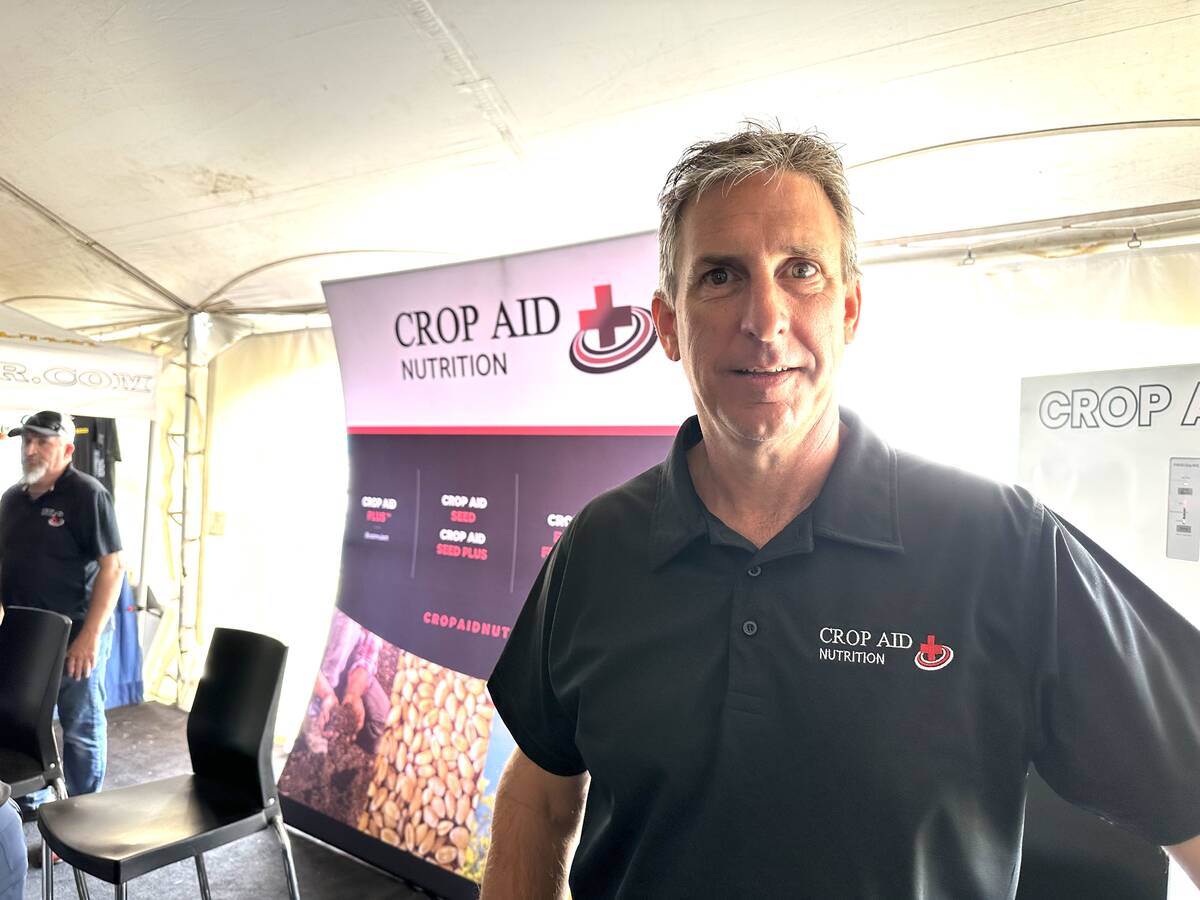
New soil treatment targets saline patches in fields
Crop Aid SS is a Saskatchewan-made spray that’s intended to help farmers manage saline soils by leaching salts away from the root zone.
It’s hardly a new threat, particularly after years in a row of dry weather — nor is drought the only crop stress that can bring it on — although this year’s deep drought has once again brought the issue into focus.
High nitrate concentration can develop when drought-stressed crops begin to die, while their roots continue to pump available nitrogen into the plants, provincial livestock specialist Pam Iwanchysko said. Of the possible problem plants on the farm, annual crops are more susceptible than grasses and alfalfa, she noted, and even more so if those crops had plenty of fertilizer or manure applied.
The nitrates can essentially cut off an animal’s air supply.
“It’s sort of a sudden death syndrome,” Iwanchysko said. “There’s not much you can do once the damage is done.”
Wise to the threat
Cattle farmers are definitely concerned.
“We’re getting lots of calls,” Iwanchysko noted. “There are lots of forage samples that are coming back with, you know, relatively high levels of nitrates.”
Brent Benson, who owns Benson Nutrition and raises cattle near Winnipegosis, has done quick tests on frost-touched feed in the past, but this may be the first year he’s concerned about dry feed.
“This year, it’s way more common to be asked about it,” he said.
Quick tests can detect nitrates, but are not quantitative, he noted, and, for accurate results, samples must be sent to a lab.
The Manitoba Beef Producers recommends that producers contact their local Manitoba Agriculture and Resource Development extension specialist, who can then point out where feed samples can be sent, general manager Carson Callum said.
He added that if crop producers pivoting fields to greenfeed are concerned they’re selling potential poison, they should also urge buyers to get it tested.
Iwanchysko said the provincial Agriculture Department has reached out to commodity groups and is trying to get the information out.

How much is too much?
High-nitrate crops are still usable, Iwanchysko also reminded producers. They just have to be diluted to safe levels.
“What we’re recommending is that if guys are short of feed, to go ahead and bale it… get it tested,” she said. “We’ll figure out what the level of nitrates are… They can be blended off with other feed in a total mixed ration.”
Benson added that his cattle will live off “a lot of cattails and bulrushes and some barley and some protein source,” into the winter.
He’ll likely test it for nitrates and recommend his customers do the same.
“It’s a relatively cheap test, and you don’t want to mess around with that,” he said.
According to the Central Testing Laboratory in Winnipeg, published on its website, it charges $14 to add a nitrate test onto a forage testing package.
For her part, Gardiner said her cattle will be eating a combination of cover crop and polycrop residues. These usually don’t carry high nitrates.
“Probably we’ll test this year just one or two places,” she said.
Hay undesirables
Cattle farmers may also need to watch for noxious weeds when haying ditches and other less familiar areas, said Kim Brown-Livingston, the province’s weed specialist, during a webinar July 21.
“You do need to be really careful where this hay is coming from because you don’t know what’s in there,” she said.
Some weeds can cause mouth and skin irritation in cattle, or are downright poisonous.
Water hemlock, with its umbrella-like bunch of white flowers is likely “the most poisonous plant in agriculture that we deal with,” Brown-Livingston said.
At the right stage, a bite of water hemlock can kill a cow, she noted.
Even outside that grim eventuality, the weed also contributes to open cattle, miscarriages and birth defects if ingested, bad at any time, and perhaps particularly so in a year when drought has already forced producers to market away some of next year’s production.
“We are seeing a lot more water hemlock than we normally would,” Iwanchysko said, noting she’s seen it growing in the bottom of ditches.
Water parsnip and wild parsnip look similar and are more mildly toxic, Brown-Livingston also noted, while burdock and woolly burdock are common to “waste areas, old yard sites,” and can creep into fields and ditches. The burrs can irritate cattle’s nose, eyes and digestive tract and burdock also contains poisonous compounds.
Brown-Livingston also singled out plants like seaside arrowgrass — which grows in pastures and drier areas and is “quite poisonous,” she said, while sap from plants like leafy spurge, goldenrod, milkweed and hemp dogbane can be toxic and irritating to cattle.
Others, like wild licorice and wild bergamot, aren’t toxic but have strong flavour and could be a problem in dairy hay.
And again, nitrates are a threat. The stresses that lead to nitrate accumulation in annual crops can have the same effect in common weeds like kochia, Russian thistle and lamb’s quarters.
Chipping away
It’s just one more thing for cattle producers to deal with, in a year where feed is borderline non-existent in places, and parts of the province are seeing far-from-typical summer runs at the auction mart as farmers are forced to sell cattle.
“The hits keep coming, coming from left and right,” Callum said.
Yet, there are a few hopeful signs.
“There’s a lot of engagement with members within the sector, both from the grain side and the livestock side,” Callum said. “We’re seeing a lot of those good news stories of people making that damaged crop or poor crop available for that alternative use, and a lot of people who may have some extra looking to push it in the direction where feed is extremely lacking.”
Geralyn Wichers is a reporter with the Manitoba Co-operator. Her article appeared in the Aug. 5, 2021 issue.




